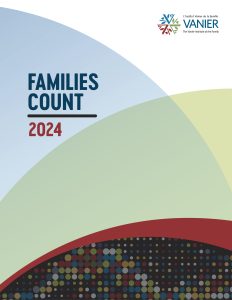When the first edition of Families Count was published in 1994, the most recent census data showed that one-third (33.0%) of the population in Canada aged 65 and older were widowed in 1991.1 By 2021, this had fallen to one in five (20.0%).2 Across all age groups, there are proportionally fewer people who are widowed today than in the early 1990s.
A variety of factors have driven the decline in the proportion of widowed people and for the tendency for widowhood to occur later in life. Improved healthcare and advances in medical science have contributed to increased life expectancy. Declining crude mortality rates over the last half century (i.e., the number of deaths in a given year per 100,000 population) have also reduced the likelihood of a spouse dying at a younger age.3
The declining likelihood of becoming widowed over the last 30 years has been most evident among older women. This is the result of the closing gender gap in life expectancy over the last several decades. Between 1980–1982 and 2020–2022, life expectancy at birth increased from 79.1 years to 83.8 years for women, and from 72.0 years to 79.3 years among men.4 As a result, the gap in life expectancy between women and men fell from 7.1 years to 4.5 years during this period.
In 2021, 47.1% of women aged 80 to 84 were widowed, compared with 16.6% of men in the same age group.2 It is not until men reach 95 years of age and older that most are widowed. Also, men tend to be older than women in most heterosexual marriages, and the average age difference between spouses or partners has reduced in recent decades.5 This has contributed to the declining percentage of widowed people—particularly women.
Another contributing factor is declining marriage rates. “Widowed” includes people whose legally married spouse has died and who have not remarried. Common-law families are therefore not included in widowhood statistics, because the partners were never legally married.
Why this matters
In addition to feelings of grief, sadness, and loneliness, being widowed can have major consequences for the grieving partners and their families. Widowhood has economic implications, since it is often accompanied by additional expenses, such as funeral costs and expenses related to changes in living arrangements. Losing a spouse also often means losing a source of family income, particularly for older people who may have limited workforce opportunities and/or who had relied on their spouses’ income or pension benefits. For younger families, the surviving spouse may experience difficulties in combining earning and caregiving responsibilities while adjusting to changing family dynamics during a difficult time.
Various programs and initiatives are in place to support the economic wellbeing of widowed people, including survivor benefits through the Canada Pension Plan (CPP) and Old Age Security (OAS) programs. These programs have helped to improve the living standard of widowed older adults. Research has shown that divorce has a greater impact on living standards than widowhood during retirement.6
Source: Statistics Canada. (2023, March 29). Marital status, age group and gender: Canada, provinces and territories and economic regions.2
Sources: Statistics Canada. (1992). Population by age groups (21a) and sex (3), showing marital status (6) – Canada, provinces and territories, federal electoral districts and enumeration areas.1
Statistics Canada. (2023, March 29). Marital status, age group and gender: Canada, provinces and territories and economic regions.2
References
- Statistics Canada. (1992). Table E9102 Population by age groups (21a) and sex (3), showing marital status (6) – Canada, provinces and territories, federal electoral districts and enumeration areas. https://www12.statcan.gc.ca/English/census91/data/tables/Rp- eng.cfm?LANG=E&APATH=3&DETAIL=1&DIM=0&FL=A&FREE=1&GC=0&GID=0&GK=0&GRP=1&PID=86&PRID=0&PTYP E=4&S=0&SHOWALL=No&SUB=0&Temporal=1991&THEME=101&VID=0&VNAMEE=&VNAMEF ↩︎
- Statistics Canada. (2023, March 29). Table 98-10-0132-01 Marital status, age group and gender: Canada, provinces and territories and economic regions. https://doi.org/10.25318/9810013201-eng ↩︎
- Decady, Y., & Greenberg, L. (2014, July). Ninety years of change in life expectancy. Health at a Glance. https://www150.statcan.gc.ca/n1/pub/82-624-x/2014001/article/14009-eng.htm ↩︎
- Statistics Canada. (2023, November 27). Table 13-10-0114-01 Life expectancy and other elements of the complete life table, three-year estimates, Canada, all provinces except Prince Edward Island. https://doi.org/10.25318/1310011401-eng ↩︎
- Milan, A., Wong, I., & Vézina, M. (2014, February 24). Emerging trends in living arrangements and conjugal unions for current and future seniors, 1981 to 2011. Insights on Canadian Society. https://www150.statcan.gc.ca/n1/pub/75-006- x/2014001/article/11904-eng.htm ↩︎
- Mehdi, T. (2023, May 8). A cross-cohort comparison of the economic impact of divorce and widowhood on seniors.
Economic and Social Reports. https://doi.org/10.25318/36280001202300400003-eng ↩︎

Families Count 2024 is a publication of the Vanier Institute of the Family that provides accurate and timely information on families and family life in Canada. Written in plain language, it features chapters on diverse topics and trends that have shaped families in Canada. Its four sections (Family Structure, Family Work, Family Identity, and Family Wellbeing) are guided by the Family Diversities and Wellbeing Framework.
The Vanier Institute of the Family
94 Centrepointe Drive
Ottawa, Ontario K2G 6B1
[email protected]
www.vanierinstitute.ca

This work is licensed under a Creative Commons Attribution-Noncommercial 4.0 International license.
How to cite this document:
Battams, N., & Mathieu, S. (2024). The percentage of older adults who are widowed has declined. In Families count 2024, The Vanier Institute of the Family. https://vanierinstitute.ca/families-count-2024/the-percentage-of-older-adults-who-are-widowed-has-declined


